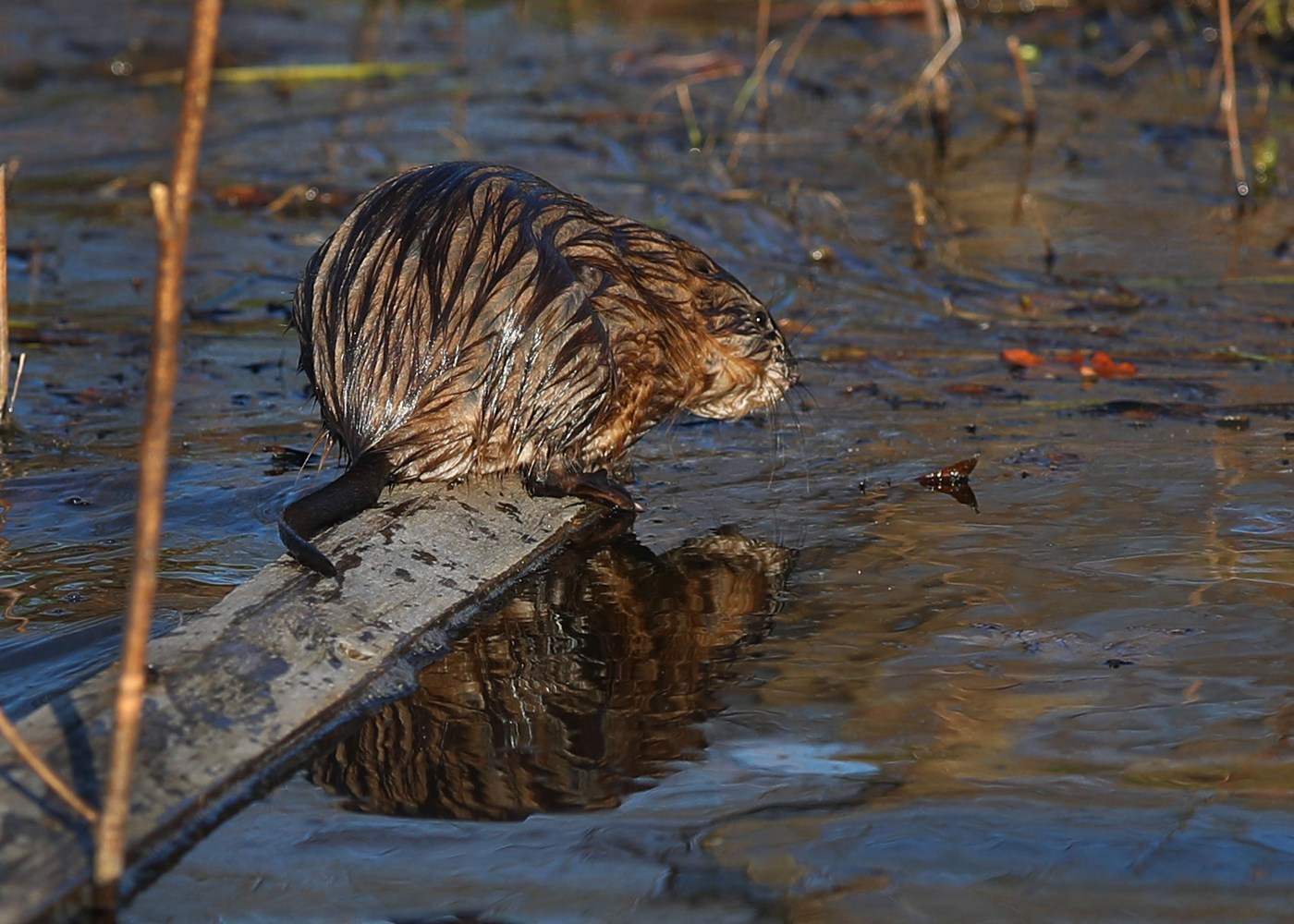UPDATE: New research reveals that muskrats are playing a vital role in fighting invasive cattails and restoring biodiversity in the Great Lakes wetlands. A study conducted by researchers from Loyola University Chicago confirmed that these semi-aquatic rodents significantly reduce the presence of invasive species, enhancing local ecosystems.
The study found that muskrats can reduce invasive narrowleaf cattails, or Typha angustifolia, by an impressive 71%. This invasive species, introduced to North America in the 19th century, outcompetes native plants, disrupting critical habitats for various aquatic organisms, including fish, birds, and amphibians. Researcher Shane Lishawa emphasized that the loss of native flora impacts biodiversity, making the muskrats’ role even more crucial.
Historically, muskrats and beavers have coexisted in these marshy ecosystems, but muskrats are less recognized for their ecological contributions. Unlike beavers, which build dams that alter water flow, muskrats cut invasive cattails underwater, effectively creating openings that allow native plants to thrive. This “patchwork” effect promotes a diverse habitat for wildlife.
Lishawa observed this phenomenon during years of research in a freshwater marsh in Michigan’s Upper Peninsula. He noted a significant increase in the local rodent population as water levels rebounded, which corresponded with improved biodiversity. The Sault Ste. Marie Tribe of Chippewa Indians, who hold cultural significance for the common muskrat, echoed Lishawa’s findings, affirming that these rodents are essential for wetland health.
The study, which also involved the University of Connecticut, demonstrated that where muskrats thrived, the cover of nonnative plants like European frogbit was also reduced. This is critical as invasive species threaten the integrity of wetland ecosystems across the region.
To explore the potential for human intervention, researchers attempted to replicate muskrat behavior by mowing cattails below the waterline. Lishawa noted that this strategy could achieve similar results in areas lacking muskrats. “We wanted to see if we could create conditions that reflected what the muskrats did,” he stated, emphasizing the need for further exploration of this management technique.
As the U.S. grapples with significant wetland loss—over 90% of original marshy land in Illinois alone due to urban development and agriculture—this research underscores the urgency of restoring these ecosystems. The 2023 Supreme Court ruling in the case of Sackett v. EPA has further weakened protections for inland wetlands, making restoration efforts even more crucial.
With only half of the original Great Lakes wetlands remaining, the integration of muskrats into restoration plans could be pivotal. Researchers are advocating for capturing nuisance muskrats and relocating them to areas where they can promote biodiversity and combat invasive species.
Lishawa concluded that muskrats deserve recognition alongside beavers for their ecological roles. “There’s been this awakening about the ecological role of beavers. I think there’s a parallel there with muskrats,” he said. As communities and scientists look for innovative ways to restore degraded ecosystems, the humble muskrat may emerge as a key player in the fight against invasive plants and the preservation of biodiversity.
For ongoing updates on this groundbreaking research and its implications for the Great Lakes region, stay tuned.



































































